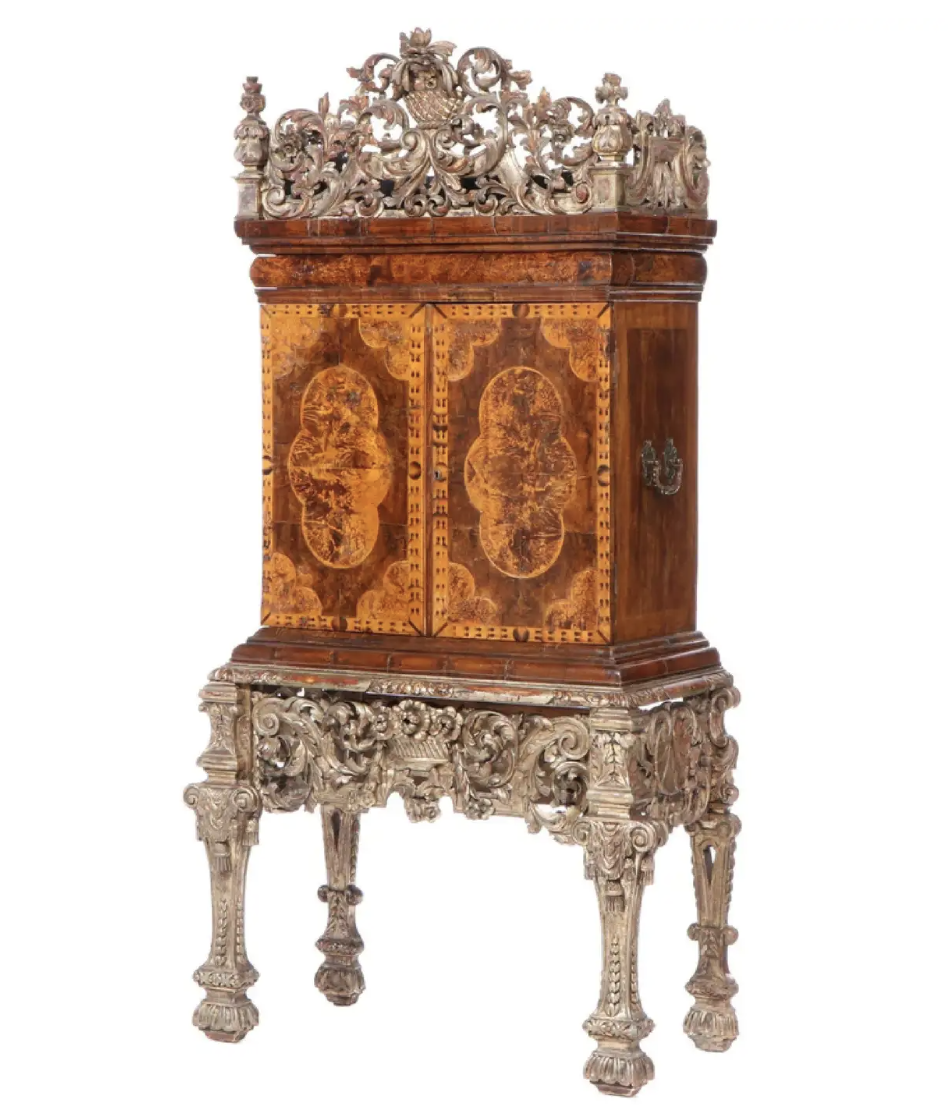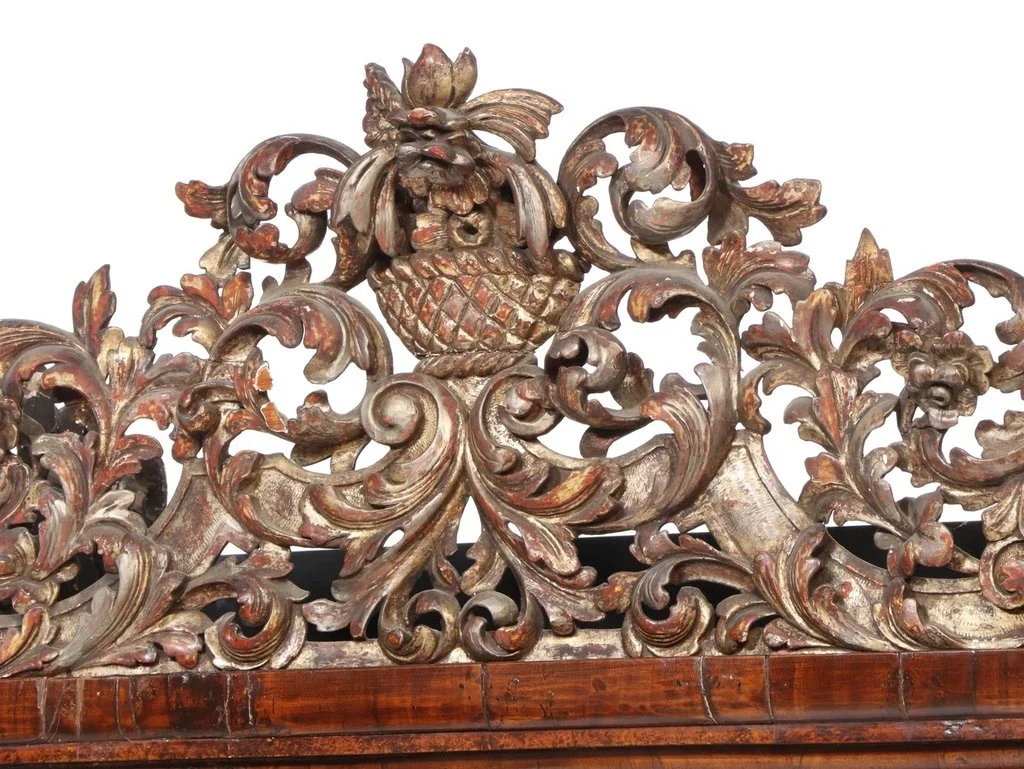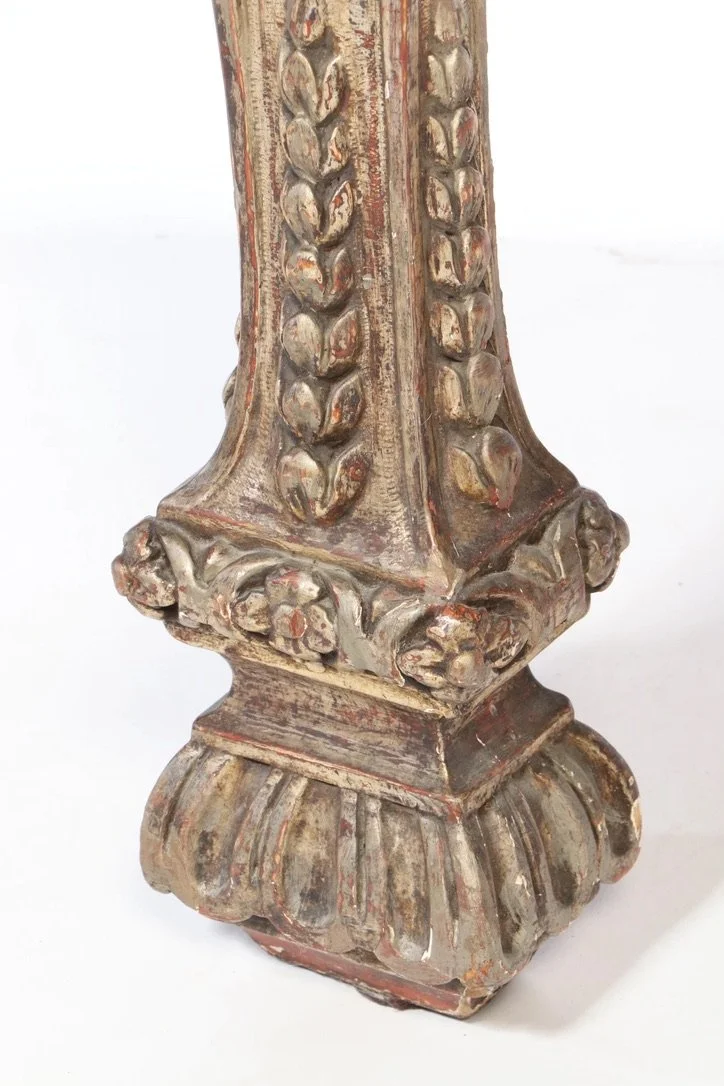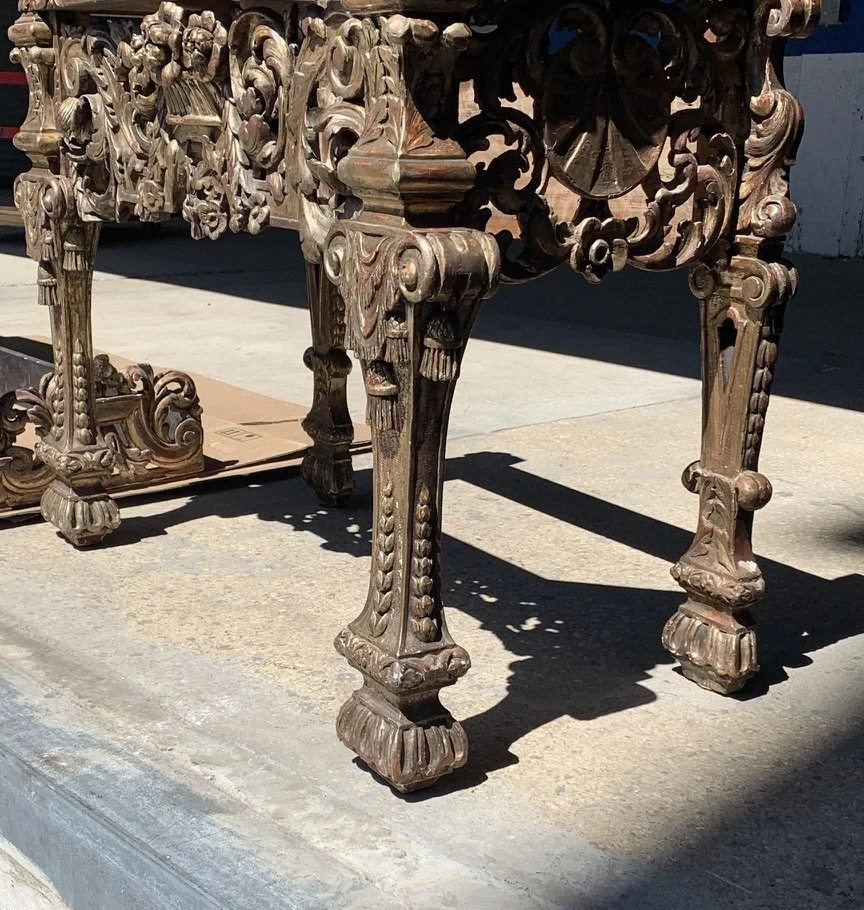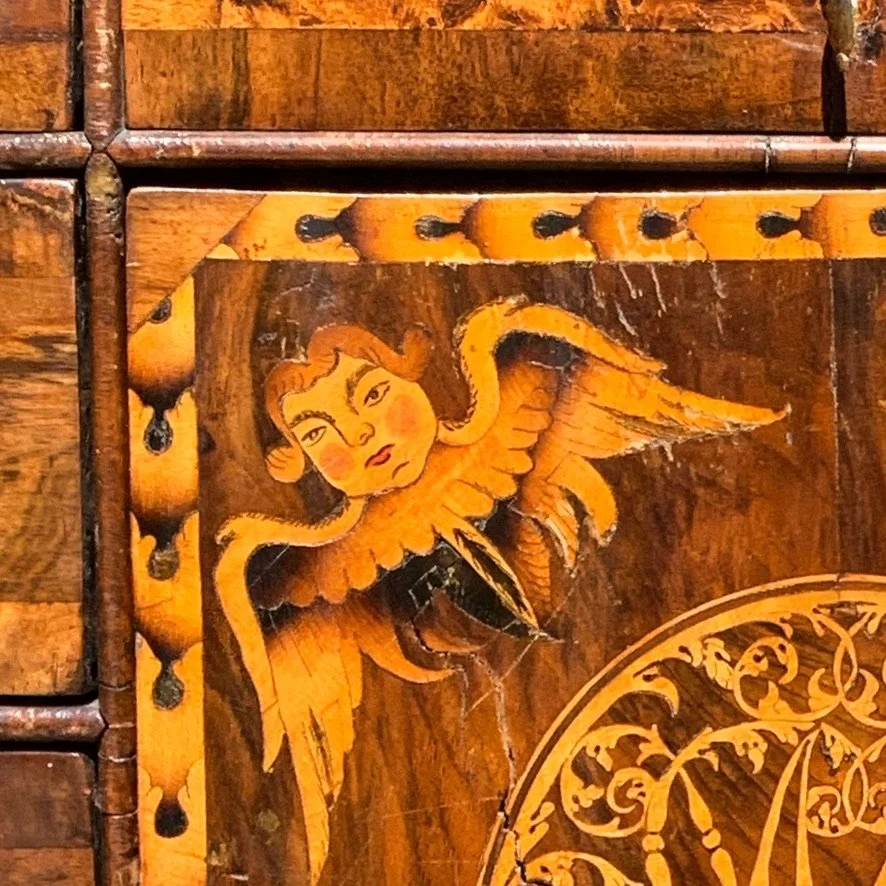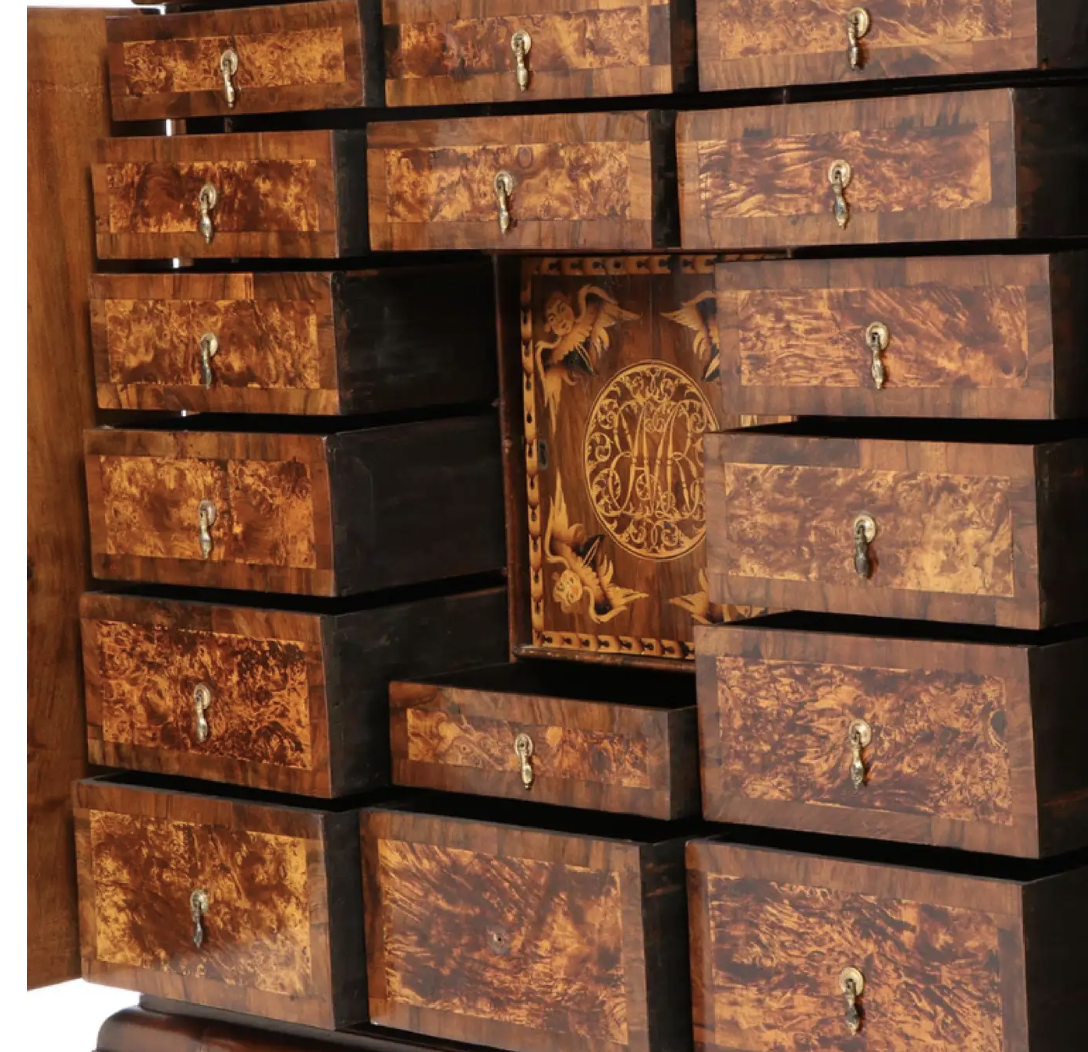Charles II Walnut, Mulberry Marquetry Cabinet, Gilt Stand, 17th C H.F. du Pont
Charles II Walnut, Mulberry Marquetry Cabinet, Gilt Stand, 17th C H.F. du Pont
Charles II walnut and mulberry marquetry cabinet on giltwood stand, c. 1650-1670. Giltwood cresting and stand appear to be from a few decades later.
The form of furniture now described as a cabinet developed across Spain and France in the 16th Century. In architecture, a cabinet is a small private room for the housing or display of precious objects, hence the term could be aptly applied to the small, portable pieces of furniture made for the carriage and display of valuable items and able to stand upon a table, trestle stand or chest. Although known in England from Tudor times, cabinets were not widely produced there until after the Restoration of the monarchy in a1660 - cabinets became extremely popular from this period. This cabinet dates from 1660-1670. These cabinets were larger, perhaps up to six foot tall and 3-4 foot wide, some stood on chests while others were mounted on their own stand; the decoration of the stand matching that of the cabinet and of equal quality, reflecting the treasures stored within.
The revolution in the art of veneering also originally came from the Netherlands and increased in popularity with the return of Charles II from The Hague in 1660. Accompanying the king to England were foreign craftsmen, artists, silversmiths, and designers. In 1660, highly trained craftsmen were sent to northern Italy and southern Germany from the Netherlands to teach apprentices new skills in carpentry, joinery and marquetry.
When William of Orange succeeded to the English throne in 1689, the two countries became even more closely connected.
The Dutch had a vast trade with the East and introduced novel materials such as cane and lacquer. Besides panels of lacquer, complete chests called 'lacred tronks' were imported and placed upon custom-made, highly elaborate, occidental stands of gilt, or silvered, finish. Also, sophisticated methods of construction were required to display the increasingly popular Chinese and Japanese porcelains.
This cabinet has a distinguished and documented provenance. It was acquired by Henry Francis du Pont (1880-1969) quite early in his collecting career and would live with him for almost his entire adult life — both at his Park Ave Manhattan apartment and, later, his Winturthur private residence. H.F. Du Pont was an American horticulturist, an expert and collector of European and early American furniture and decorative arts, and member of the prominent du Pont family. In 1951 he established his estate of Winterthur in Delaware as what has been recognized as the premier museum of American Decorative Arts. A passionate collector with virtually unlimited resources, he assembled the more than 89,000 antiques that fill the museum's 175 rooms and framed the mansion with magnificent plantings, including a Quarry Garden, a Sundial Garden, a Pinetum, and an "Enchanted Woods" for children.
Dimensions
43.0" W x 88.0" H x 21.0" D
- measured assembled (the cresting, cabinet, and stand can be separated).
Provenance:
Private collection of H.F. du Pont, New York.
Private collection of H.F. du Pont, Winturthur.
October 1994, Christie’s New York, Fine English and French Furniture of H.F. du Pont from Winterthur (Lot 30).
Literature:
Sweeney, John, The H.F. du Pont House: A Transition, Fine English and French Furniture and Objects of Art from the Private Residence of Henry Francis du Pont at Winterthur, (New York, NY: Christie’s, 1994).
Emily Elizabeth Martin, Emily Elizabeth. “The Mansion House by the Bridge: An Account of the Henry Francis du Pont Cottage at Winterthur.” Graduate School of Clemson University; The Graduate School of College of Charleston, 2009.


